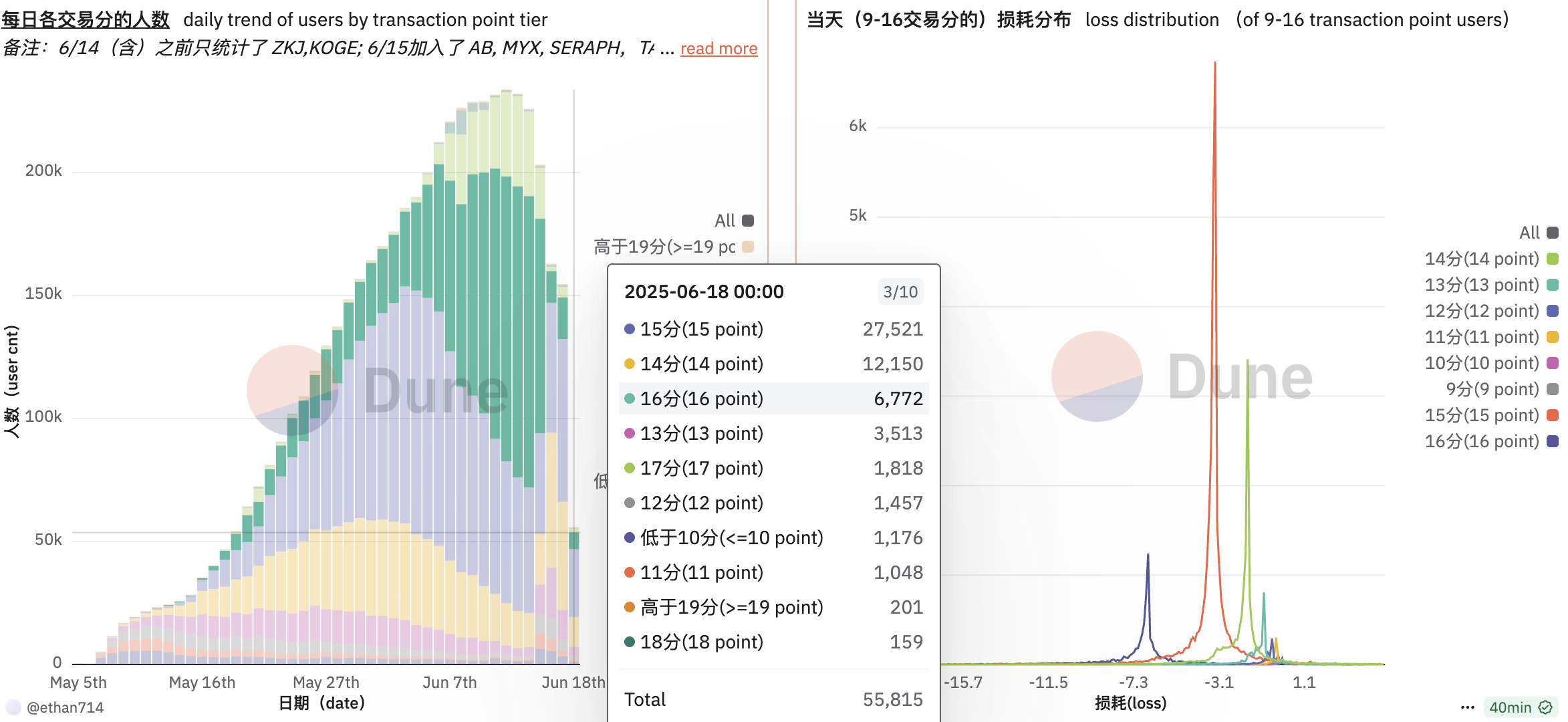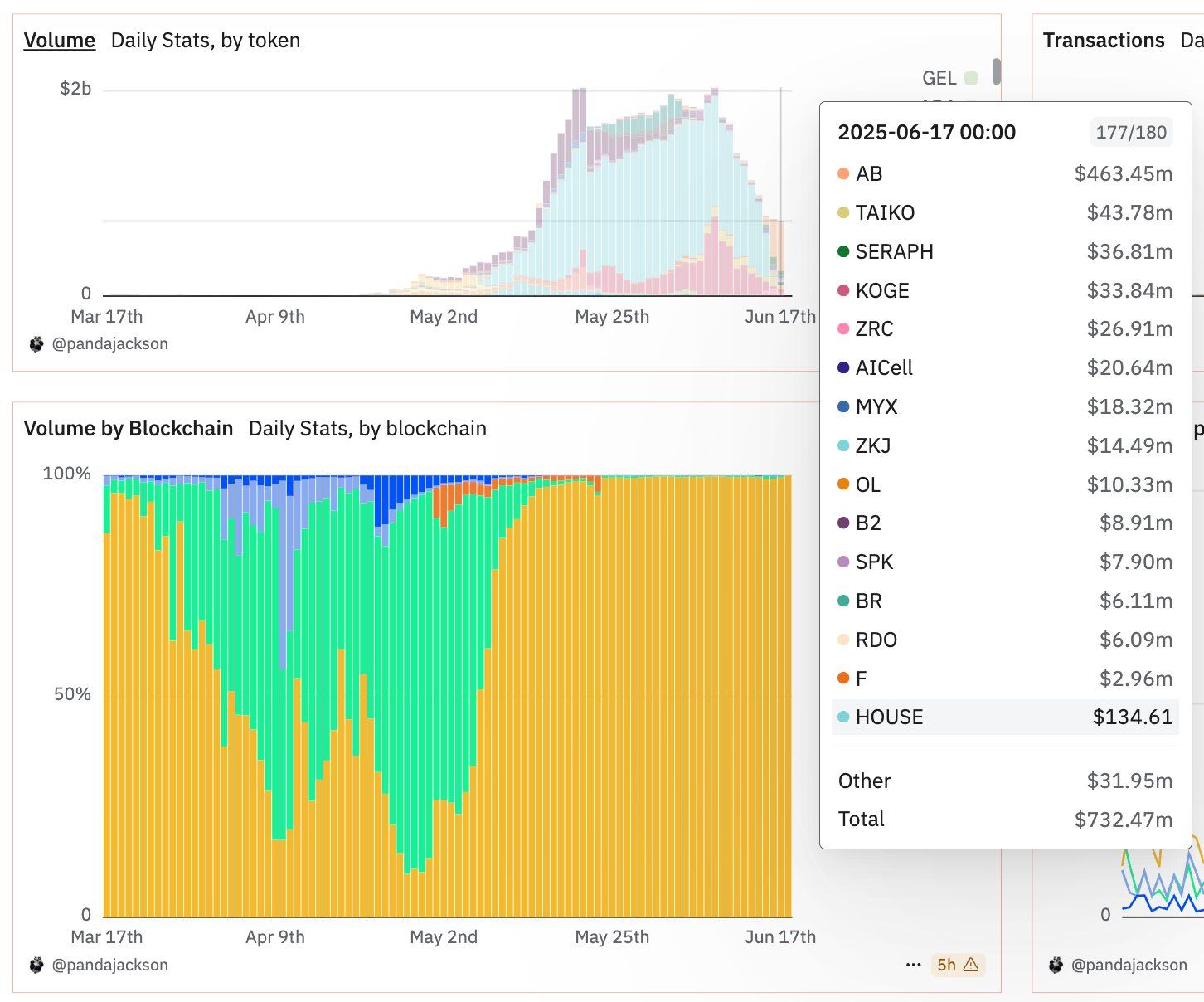-
Binance Alpha experiences a significant user exodus and trading volume decline following the flash crash of tokens ZKJ and KOGE, triggered by large liquidity withdrawals from whale wallets.
-
The platform’s trading volume plummeted 63% from its peak of $2.04 billion, reflecting diminished user confidence amid unsustainable costs and low profitability.
-
A COINOTAG analyst highlighted the urgent need for Binance Alpha to reform its airdrop model and enhance transparency to restore trust and prevent market manipulation.
Binance Alpha’s user base and trading volume sharply decline after whale-triggered crashes in ZKJ and KOGE tokens, highlighting urgent calls for platform reform and transparency.
Binance Alpha Faces Steep Decline in User Engagement and Trading Activity
Recent data from Dune Analytics reveals a stark downturn for Binance Alpha, with active users dropping from 233,000 on June 12 to 195,000 by June 15—a loss of nearly 40,000 users in just three days. More concerning is the decline in active traders, which has fallen to approximately 55,000, signaling eroding confidence and engagement on the platform.

This downturn is directly linked to the sudden flash crash of the ZKJ and KOGE tokens, precipitated by large whale wallets withdrawing liquidity en masse. This liquidity drain triggered a cascade of sell orders that the platform’s pool structure was ill-equipped to absorb, leading to a sharp market correction.
Consequently, Binance Alpha’s trading volume nosedived from a high of $2.04 billion on June 8 to roughly $749 million within days, a 63% decrease that underscores the platform’s vulnerability to liquidity shocks and market manipulation.
In response, Binance introduced a policy targeting “fake volume” practices, but the community criticized the timing as insufficiently proactive. Users have since called for compensation for lost points and greater transparency in policy enforcement, emphasizing that opaque communication has further eroded trust.
Strategic Reforms Needed to Stabilize Binance Alpha’s Market Position
The recent crisis exposed fundamental weaknesses in Binance Alpha’s operational model, particularly its reliance on an airdrop-driven ecosystem that incentivizes short-term speculation rather than sustainable growth. The AB token now dominates over 63% of daily trading volume, a concentration that mirrors previous dominance by ZKJ and KOGE before their collapse.

Market analysts on social platforms like X have noted the inherent risks of such concentrated liquidity pools, with one commenting, “There is no particularly good target. Even if the wear is low, there is still a risk of price fluctuations.” This highlights the precariousness of Binance Alpha’s current token distribution and trading dynamics.
To regain stability and user confidence, Binance Alpha must implement a transparent and equitable point allocation system that discourages artificial volume inflation. Reducing dependence on a few centralized tokens and prioritizing projects with robust liquidity and broad distribution will be critical.
Additionally, deploying advanced anti-bot measures to detect and mitigate abnormal trading patterns is essential to maintaining market integrity. Enhancing transparency around policy changes by engaging the community early in the decision-making process will further help rebuild trust and foster a more resilient trading environment.
Conclusion
Binance Alpha’s recent challenges underscore the risks of concentrated liquidity and opaque governance in crypto trading platforms. Addressing these issues through transparent policy reforms, improved anti-manipulation safeguards, and community engagement is vital for restoring confidence and ensuring sustainable growth. As Binance Alpha navigates this critical juncture, its ability to adapt and implement robust controls will determine its future viability in a competitive market.






